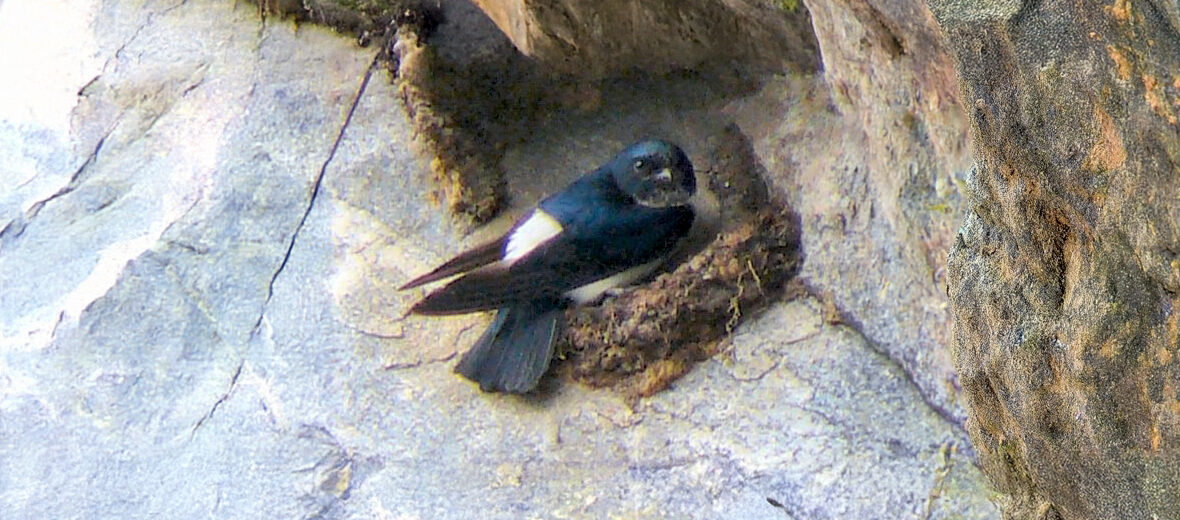
The Nepal house martin is a nonmigratory bird that hails from southeast Asia. They can be found at elevations of up to 13,100 feet! While these little birds don’t face any significant threats, they are faced with habitat loss and destruction, predation, pesticides, pollution, and climate change. However, these passerine birds (perching and songbirds) are abundant enough to be listed as Least Concern by the IUCN. Their population trend is also listed as stable.
First the Stats…
Scientific name: Delichon nipalense
Weight: Up to 1 ounce
Length: Up to 5.1 inches
Wingspan: Up to 11.42 inches
Lifespan: Up to 2 years
Now on to the Facts!
1.) These birds were first described by British entomologist Frederic Moore in 1854.
2.) They prefer river valleys and wooded ridges with cliffs for creating nesting sites.
3.) There are 2 subspecies of these martins: Delichon nipalense nipalense and Delichon nipalense cuttingi.
4.) Being insectivores (feed on insects), these fast flying birds take their prey on the wing (in mid flight) and feast on flies, dragonflies, moths, butterflies, mosquitoes, and other flying insects.
5.) Their primary call is a “chi-i” sound with a short 3-note breeding song sung during breeding season. Otherwise, they are a rather quiet bird.
But wait, there’s more on the Nepal house martin!
6.) Breeding season takes place between March – July.
7.) Nests are constructed as a deep mud bowl lined with grasses or feathers, and under an overhang on a vertical cliff.
Did you know…?
These birds can reach flying speeds of up to 44 mph.
8.) Being a colonial breeder, their nests are often built in colonies that can containing 100s of nests.
9.) Females lay up to 4 eggs, twice a season, that hatch in up to 16 days.
10.) They are parasitized by avian fleas.
Now a Short Nepal House Martin Video!
This video talks about house martins in general.
Be sure to share & comment below! Also, check out the Critter Science YouTube channel. Videos added regularly!

Want to suggest a critter for me to write about? Let me know here.
Some source material acquired from: Wikipedia & IUCN



